

Quantum magnetism in ensembles of large spin atoms present possibilities beyond those offered by spin ½ electron gases and effective spin ½ atoms, such as magnetic phases with topological properties applicable to quantum information manipulation, or new mechanisms for the emergence of superfluidity. We have built an experimental apparatus that produces ultracold degenerate fermionic gases of strontium 87, with large spin F = 9/2, which will be arranged on periodic potentials produced by interfering lasers (optical lattices). The large spin of strontium will enable us to emulate situations analog to those encountered by (spin 1/2) electrons in crystalline materials, but also a whole new set of situations that should contrast markedly with those. Furthermore, Strontium 87 presents original interaction properties. Indeed, contrary to most species (e.g., chromium), the interactions between two particles do not depend on their spin projections: the Pauli principle, preventing two identical fermionic particles to meet each other and interact, is the only mechanism responsible for magnetism, which leads to an uncommon SU(N) spin rotation symmetry with large consequences on the magnetism.
On our system, we expect that novel magnetic states will emerge from the interplay between the lattice potential symmetry and the SU(N) spin rotation symmetry: while cubic lattices are suited for long range antiferromagnetic ordering of spin 1/2 particules, they are not expected to be for a large number of spin states. Conversely, triangular geometry may be more suited to antiferromagnetic ordering with three spin states than two. We aim at exploring the effect of these original properties on:
i) the emergence of exotic magnetic phases, ranging from non-conventional spin ordering expected, e.g., for 3 populated spin states in a triangular lattice, to disordered phases such as chiral spin liquids for large number of populated spin states (up to 10 in our experiment). The latter present strong analogies with quantum frustrated magnets and with the topological properties of the quantum Hall states, and present possible applications to quantum information processing.
ii) the interplay between exotic magnetic properties and conduction properties when particle transport is allowed, in analogy with the “doping” of magnetic materials which led to the observation of high-Tc electron superconductors.
To reach these goals, our approach is to take advantage of the spectroscopic properties of strontium, using know-how from the frequency metrology community. The narrow lines of this atomic species - one of which is used in the context of optical clocks - are put to use to manipulate and probe the spin degree of freedom of the atomic ensembles. The narrow linewidths lead to unrivaled energy resolution, that can be used, e.g., to target the spins of specific atoms within inhomogeneous external fields (tomography), and to prepare deterministically specific spin patterns and reach towards low energy, low entropy many-body states.
Emilia Witkowska, Polish Academy of Sciences
John H Huckans, Bloosmburg University
Marc Cheneau, Laboratoire Charles Fabry de l'Institut d'Optique
Jérôme Lodewyck, LNE-SYRTE
Rodolphe Le Targat, LNE-SYRTE
Tommaso Roscilde, Ecole Normale Supérieure de Lyon
Coherent control over the high-dimensional space of the
nuclear spin of alkaline-earth atoms, Husain Ahmed, Andrea
Litvinov, Pauline Guesdon, Etienne Maréchal, John H. Huckans,
Benjamin Pasquiou, Bruno Laburthe-Tolra, Martin
Robert-de-Saint-Vincent,
PRX Quantum 6, 020352 (2025)
Effective light-induced Hamiltonian for atoms with large
nuclear spin, D. Burba, H. Dunikowski, M.
Robert-de-Saint-Vincent, E. Witkowska, and G. Juzeliūnas,
Phys. Rev. Research 6, 033293 (2024)
Scalable spin squeezing from spontaneous breaking of a continuous symmetry, Tommaso Comparin, Fabio Mezzacapo, Martin Robert-de-Saint-Vincent, and Tommaso Roscilde, Phys. Rev. Lett. 129, 113201 (2022)
Measuring densities of cold atomic clouds smaller than the resolution limit, A. Litvinov, P. Bataille, E. Maréchal, P. Pedri, O. Gorceix, M. Robert-de-Saint-Vincent, and B. Laburthe-Tolra, Phys. Rev. A 104, 033309 (2021)
Adiabatic spin-dependent momentum transfer in an SU(N) degenerate Fermi gas, P. Bataille, A. Litvinov, I. Manai, J. Huckans, F. Wiotte, A. Kaladjian, O. Gorceix, E. Maréchal, B. Laburthe-Tolra, M. Robert-de-Saint-Vincent, Phys. Rev. A 102, 013317 (2020)
Shelving spectroscopy of the strontium intercombination line, I. Manai, A. Molineri, C. Fréjaville, C. Duval, P. Bataille, R. Journet, F. Wiotte, B. Laburthe-Tolra, E. Maréchal, M. Cheneau, M. Robert-de-Saint-Vincent, J. Phys. B: At. Mol. Opt. Phys. 53 085005 (2020)
Dissipative cooling of spin chains by a bath of dipolar particles, M. Robert-de-Saint-Vincent, P. Pedri, B. Laburthe-Tolra, New Journal of Physics 20, 073037 (2018)
Note on the reflectance of mirrors exposed to a strontium beam, J. Huckans, W. Dubosclard, E. Maréchal, O. Gorceix, B. Laburthe-Tolra, M. Robert-de-Saint-Vincent, arXiv:1802.08499 (2018)
June 2025: Now, with the implementation of evolution operators deriving from the generators of the SU(10) group, complete control over the quantum state of the nuclear spins is achievable. This is an opportunity to use the full Hilbert space of strontium 87 atoms in experiments and for quantum technologies, that we explore in our published paper PRX Quantum 6, 020352 (2025). For example, we use it to measure simultaneously two non-commuting observables of pseudo-spin ensembles!

December 2024: Congratulations to Husain Ahmed for his PhD defense !
January 2023: Congratulations to Andrea
Litvinov for his PhD defense ! Have a nice new Austrian Life, at
F. Ferlaino group.
February 2022:
We have achieved coherent control of the SU(10) spin, with
the implementation of adiabatic transfer between selected spin
states in the degenerate gas. This puts us one step closer to
exploring the emergence of correlations in our system,
following the ideas developed in our collaboration with T
Roscilde and his team (PRL 129, 113201, 2022).
January
2022: Welcome to Benjamin Pasquiou, new permanent member of
the group!
October
2021: Welcome to Husain Ahmed, joining us for a PhD on the
strontium apparatus!
The Fermi gas is loaded in optical lattices, and its spin
distribution controlled by optical pumping. Studies of quantum
magnetism in optical lattices are now on the menu.
March 2020: First experimental results using the degenerate Fermi gas (arXiv:2003.13444)! We used spin-orbit coupling to selectively manipulate and probe up to four selected spin states at once - see recent results. We also present our new quantum gas machine setup in this paper, down to T/Tf ~ 0.2.

Spin and momentum resolved
picture of a five-component Sr gas
October 2019: we concluded a great collaborative work with Marc Cheneau and his team, at Laboratoire Charles de Fabry, on a new spectroscopy scheme for the intercombination line for strontium. For a large spectroscopy signal and a low complexity, read there: arXiv:1910.11718.
September 2019: Welcome to Andrea Litvinov, for his PhD on the strontium apparatus!
March 2019: Fermionic
degeneracy reached! We now produce 10-component spinor Fermi
gases of Strontium 87, around half the Fermi temperature.
September
2018: Welcome to Pierre Bataille, first PhD on the strontium
apparatus!
July 2018: Strontium 88 at 500 nK in a crossed dipole trap

May 2018: Narrow-line red magneto-optical trap at about 1µK, with Strontium 88. Below: shadow of the moon-shaped mot on the absorption beam
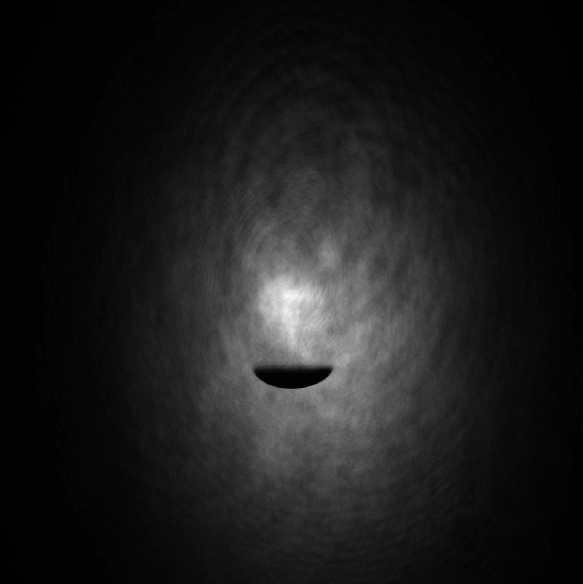
October 2017: Accumulation in magnetically trapped metastables states, and repumping, demonstrated.
June 2017: First blue magneto-optical trap.
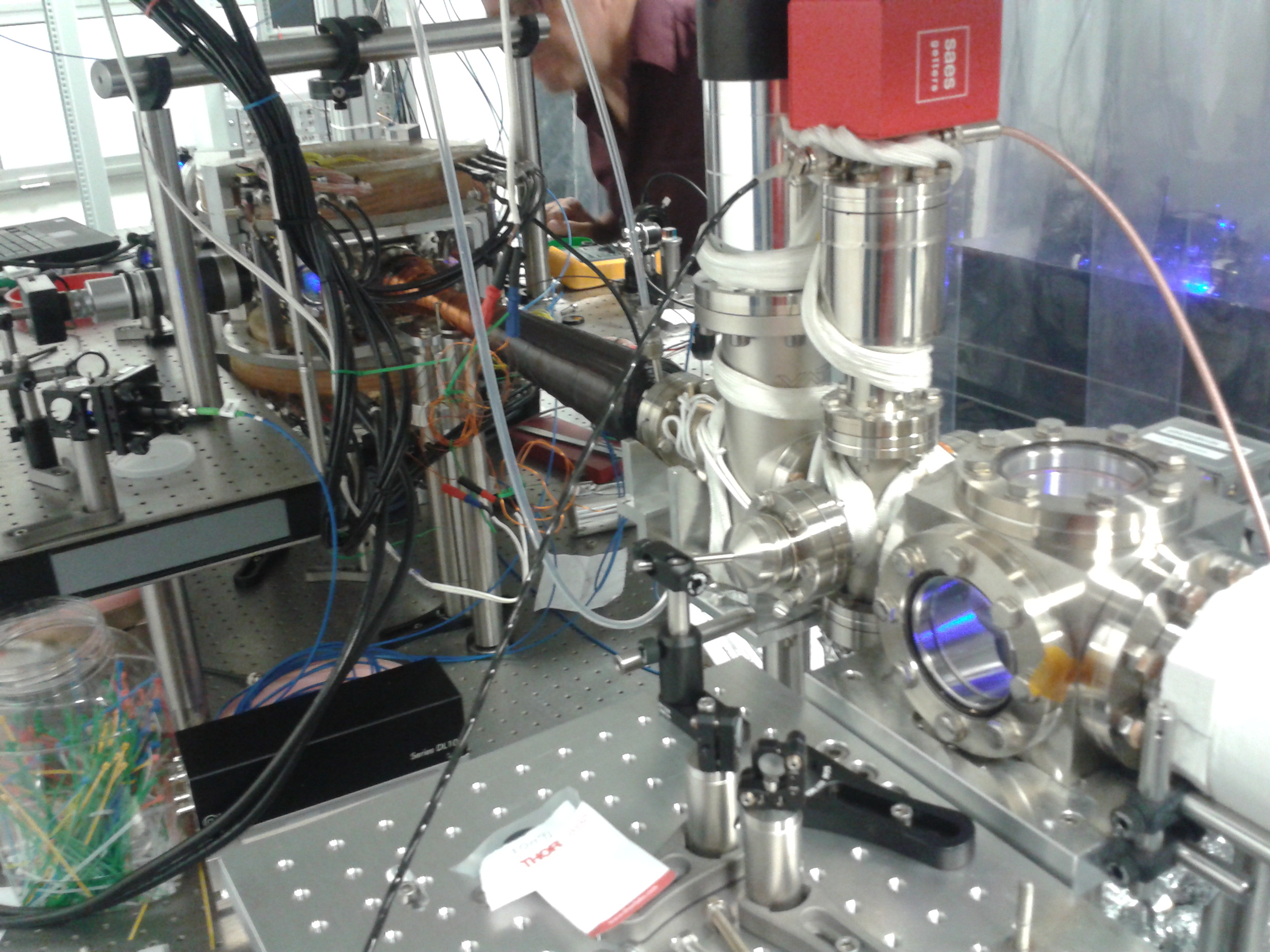
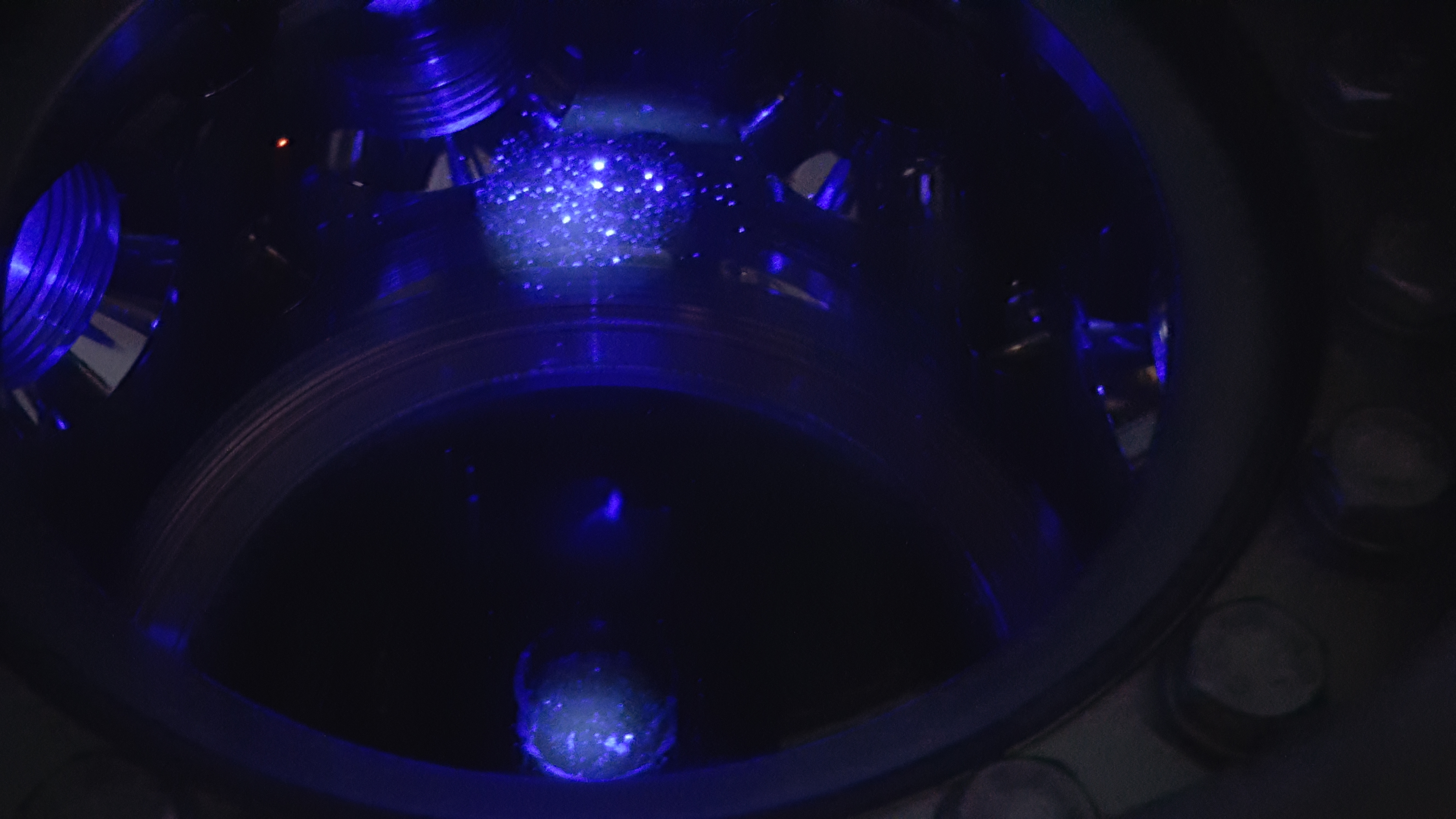
March 2017: bake-out is completed, the blue laser system is in place. Oven loading and laser cooling come next.
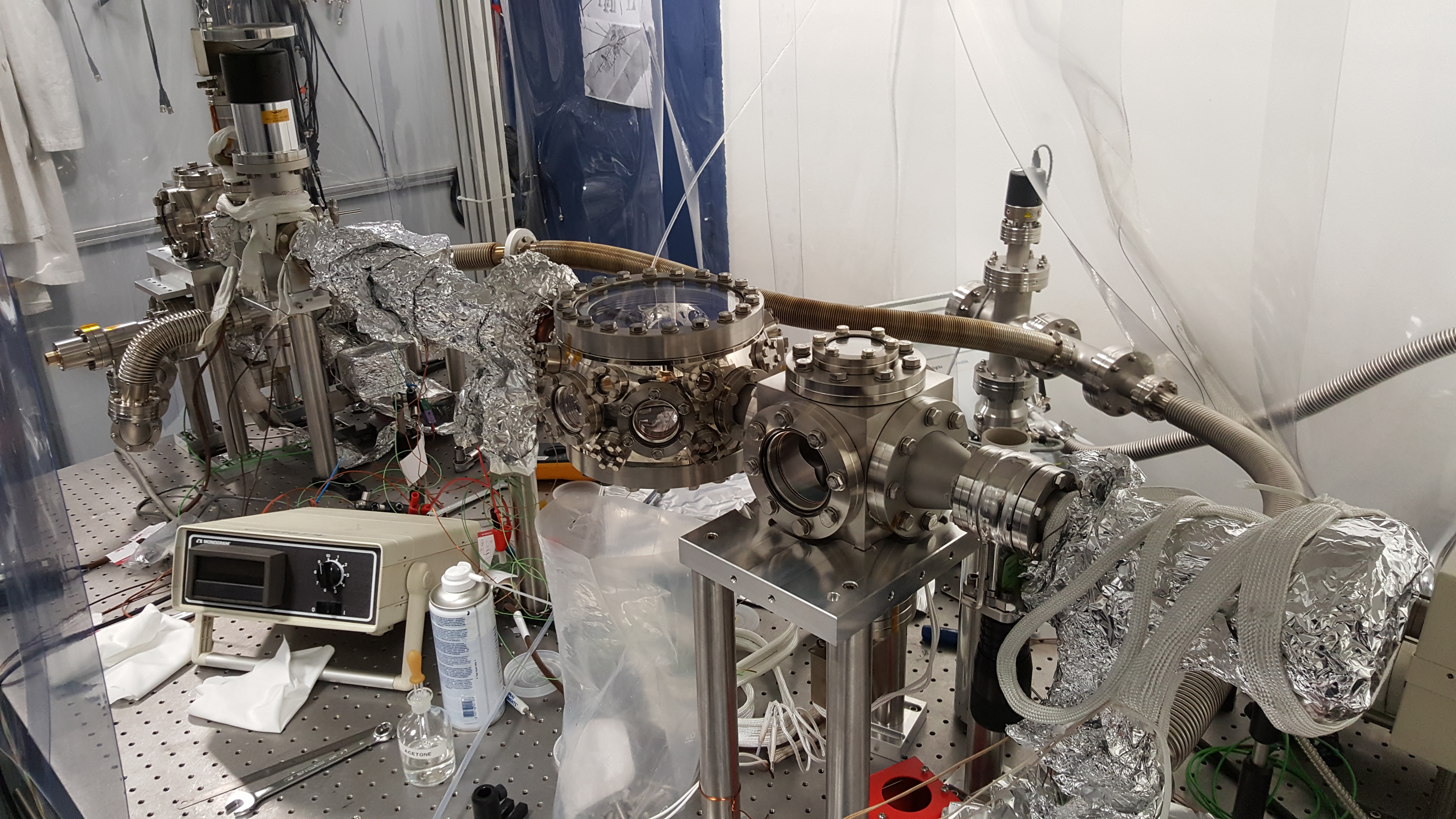
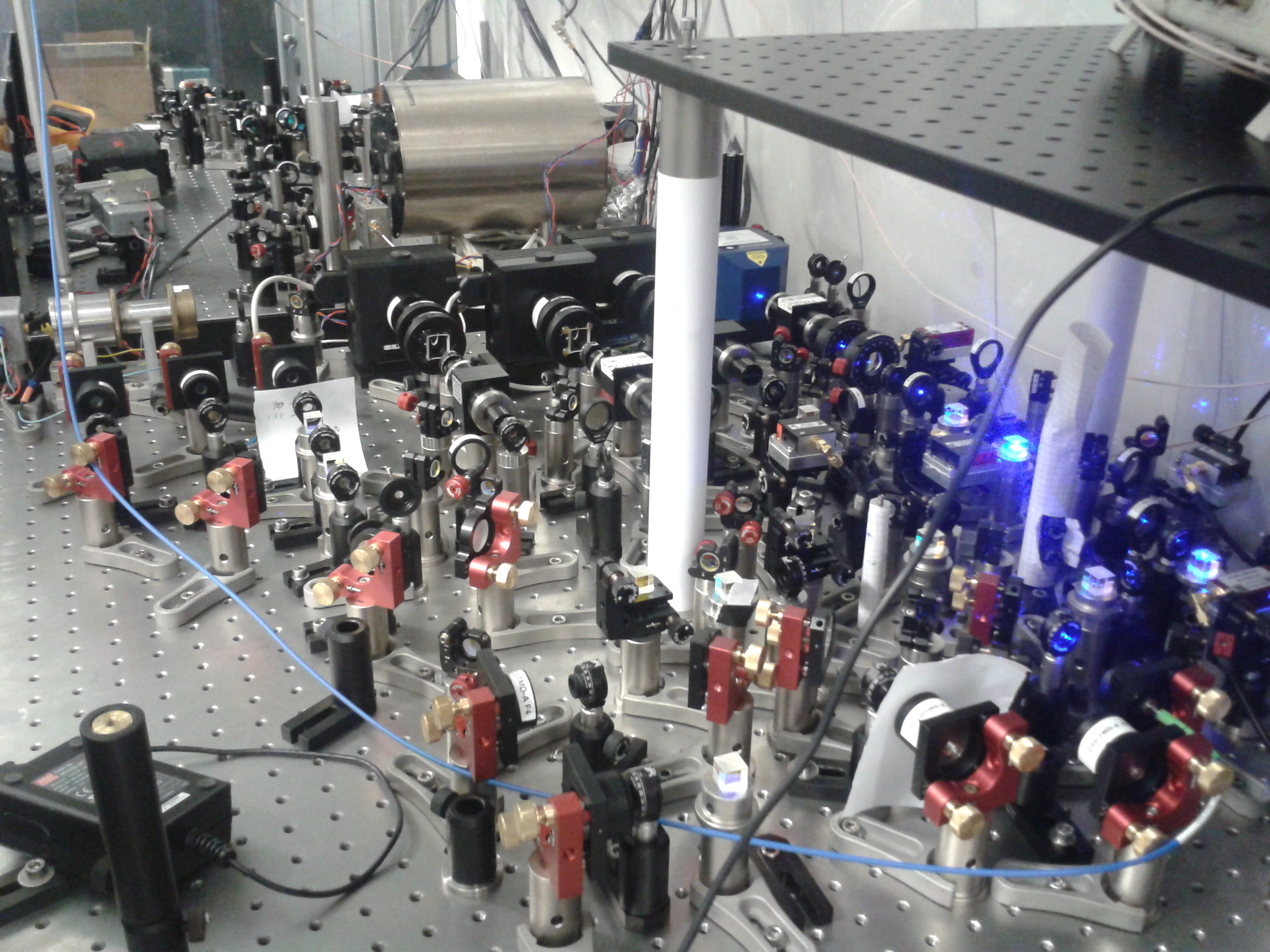
September 2016: Welcome to Isam Manai, first post-doc on the strontium apparatus, taking on the challenge of building it!